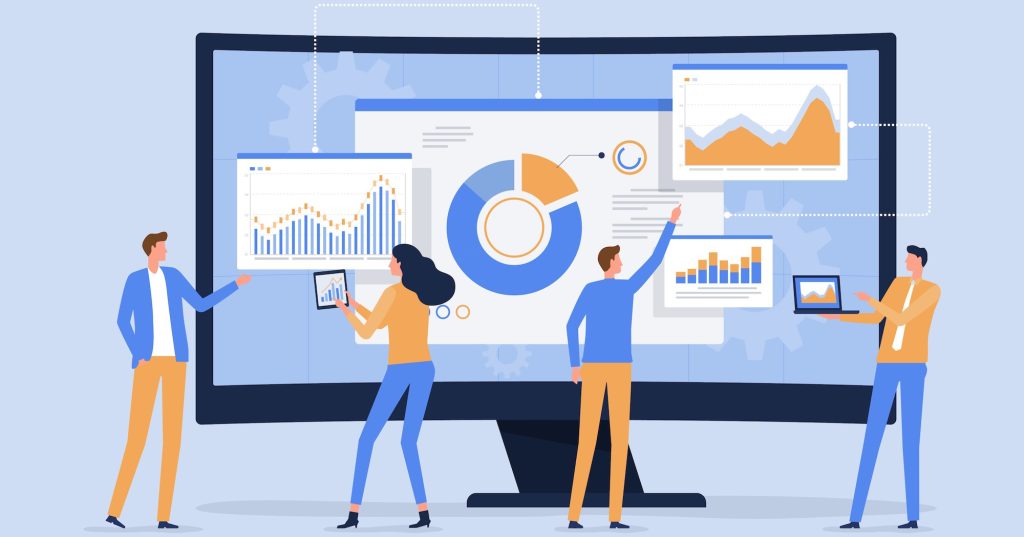When using copyrighted materials, a common misconception persists that “internal use” within an organization does not require licensing. After all, if the materials are being shared solely with colleagues within the company, why would it matter if you acquired permission?
The truth is that copyright law applies to both internal and external uses. If the work is protected by copyright and is used in certain ways without proper permission, your team could still be infringing on the copyright owner’s exclusive rights.
Let’s explore why licensing matters and how your organization can stay compliant while fostering innovation and collaboration.
Copyright Basics: Exclusive Rights and Infringement
Copyright law aims to strike a balance between protecting the rights of creators and promoting the public good. Granting authors the exclusive rights to how, and under what conditions, their works can be reused provides them with economic incentives to create new works and to make them available in the marketplace—this can help drive innovation and sustain economic growth.
Copyright law grants authors and other creators specific exclusive rights over their work, including the rights to reproduce, distribute, and display the works, and to create derivative works such as translations or adaptations. When your team uses a copyrighted work, whether it’s published research, licensed datasets, proprietary software, or visual content, in these ways without the copyright holder’s permission, you risk infringing on these rights and putting your organization at risk.
Internal Use Cases That May Require Licensing
Internal reuse of copyrighted content by data scientists may seem benign, but it can still potentially infringe on the rights of the copyright holder. Here are some common examples, and why they could be potentially infringing:
- Sharing copies of a scientific article with colleagues on your team. Copyright applies to all copies. Whether you’re sharing a physical copy or forwarding a digital file, the act of reproducing or distributing a copyrighted work typically requires permission—even if it is limited to internal use.
- Incorporating figures, graphs, or illustrations from a published work into an internal presentation. Copyright law protects not only the overall work (e.g., a journal article or book) but also the individual components, including figures, charts, tables, and images. When you use a figure or chart in an internal presentation or handout, you are reproducing, displaying, and distributing a copyrighted work.
- Using scientific literature to build a knowledge base for a Retrieval-Augmented Generation (RAG) model that will be used internally by the data science team. RAG models pose copyright infringement risks by creating potentially unauthorized copies of protected materials during the training process and storing them in the knowledge base. When the model is queried, it consults this repository and uses the stored content to generate a response which can lead to outputs that directly reproduce or closely reflect the original content, further increasing the risk of infringement.
- Sharing slides, handouts, or PDFs from a workshop or training program with team members who didn’t attend. Without receiving permission for this type of sharing, you may be violating copyright law as these materials are often protected by copyright.
- Using an AI tool to automate the prioritization of articles of interest and identify common themes and trends as part of the literature review process. Although you may not intend to use third-party content to directly train an AI system, uploading copyrighted material into an AI application for summarization or as a prompt can still have copyright implications. When you use someone else’s content as a prompt, you are making a copy (for example, if you cut and paste or download and upload a new copy). Additionally, the generation of a summary or other output that is similar to the original work can also result in copyright infringement.
- Embedding a clip from a training video or a recorded webinar in an internal presentation to illustrate a point. Audio and video materials are also protected by copyright, and even the reproduction, sharing, or display of even a small portion typically requires a license or explicit permission.
Why These Uses Can Be Infringing
These examples have the potential to be infringing activities because they involve the reproduction, distribution, adaptation, display, or performance of copyrighted materials without the copyright holder’s authorization. The fact that uses are limited to those within the company does not exempt an organization from compliance with copyright law. Unless the content is covered under a specific exception (such as the fair use defense under United States law), or is in the public domain, permission or an appropriate license is typically required.
How to Avoid Infringement Risk
Even if your data science team’s use of copyrighted materials is strictly internal, it doesn’t exempt you from copyright obligations. Copyright law protects creators’ rights regardless of the setting, and the stakes can be high. By understanding the legal landscape and securing the appropriate licenses, you can safeguard your company’s operations and focus on groundbreaking discoveries with peace of mind.
To stay compliant:
- Understand the copyright status of the materials being used—most creative works are automatically protected by copyright upon creation.
- Licenses range from highly permissive to strictly limited, so know and understand any existing terms of use for all copyrighted materials used in the business.
- Seek authorization from copyright holders when necessary.
These steps can help data scientists navigate the complexities of copyright law while maintaining ethical and legal practices.
Drive Business Forward with the Annual Copyright License
A copyright compliance strategy that informs and meets the needs of employees across the enterprise sets an organization up for higher efficiency, improved collaboration, and a minimized risk of copyright infringement, ultimately helping to fuel innovation and new discoveries.
Click here to contact us about content management and licensing solutions for your organization.
Keep learning:

